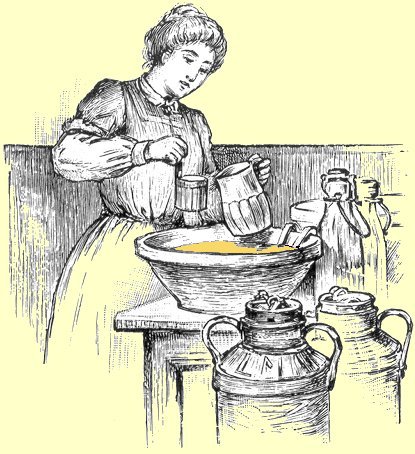A Recipe for KTOO-FM
Today, a recipe for KTOO-FM. The University of Houston's College of Engineering presents this series about the machines that make our civilization run, and the people whose ingenuity created them.
Interesting email yesterday: Radio station KTOO-FM, in Juneau, Alaska, is thinking about doing a cookbook with recipes supplied by its on-air people. They honored me by asking me to supply one.
The only beings in my household who regard me as any kind of chef are two dogs and two cats. (Lay a base of one handful dry dog food; liberally garnish with four chunks canned meat. Well, that might do up in Iditarod country, but I need something for Juneau.)
So I turn to the source my mother used for food on special occasions. It was her 1899 edition of the White House Cook Book. The first edition had come out during the presidency of grossly-overweight Grover Cleveland. My mother's edition was published during the presidency of William McKinley, who was also quite portly.
To my friends in Juneau, I offer the White House Cook Book recipe for pound cake from that bygone epoch of America -- something my mother would prepare when she really wanted to give us all a treat. There are several forms. The American and British pound cakes are similar. I'm not certain which my mother made. I'll give you the somewhat fancier British recipe.
It's called pound cake because the recipes do things by the pound. Begin with a pound of butter, which you stir until it takes on a creamy consistency. Then mix in a pound of sugar. Next separate the yolks of nine eggs from their whites. (In the American version, that becomes a dozen eggs.) Beat the yolks and stir them in. (Be still, my arteries; we've only just begun.)
As my mother then mixes in a pound and a half of flour, my sister and I lurk -- hoping that her attention will falter long enough for us to get our fingers into the mix.
Now the trimmings: Add a pound of currants, two ounces of candied peel that've been cut into neat slices, a half-ounce of citron, and a half-ounce of sweet almonds, blanched and chopped. Toss in just a little pounded mace.
When all is thoroughly mixed, you go off to the side and whisk the egg whites. Mix them in thoroughly and beat the resulting batter for twenty minutes. The recipe says you might throw in a glass of wine -- although, it points out, you hardly need it.
At this point my sister and I are practically standing at attention. Our moment has come. My mother lines the sides and bottom of a round tin with strips of buttered paper and pours the heart-stopping ambrosia in. The mixing bowl and the spoon are ours. My sister and I haggle over an equitable disposition: who licks the spoon, who licks the bowl. Meanwhile the tin goes into a well-heated oven to bake between two to two-and-a-half hours, no temperature specified. My mother simply knew how hot it should be.
Those tastes and smells now come back from sixty-five years ago. If any of you good people in Juneau want to challenge your cardiac system with one of these, let us know. It'd be worth the trip just to smell the odors wafting from your kitchen.
I'm John Lienhard, at the University of Houston, where we're interested in the way inventive minds work.
(Theme music)
H. Ziemann, and Mrs. S. L. Gillette, White House Cook Book: Cyclopedia of Information for the Home Containing Cooking, Toilet, and Household Recipes ... , Chicago: Warner Co. 1899.
I am grateful to James Lienhard for digging out the old family recipe book and finding that wonderful old pound cake for me.
The dedication in the original 1887 edition of the White House Cook Book reads as follows: To the WIVES OF OUR PRESIDENTS, Those Noble Women Who Have Graced the White House, And Whose Names and Memories are Dear to All Americans, This Volume is Affectionately Dedicated by the Author.
